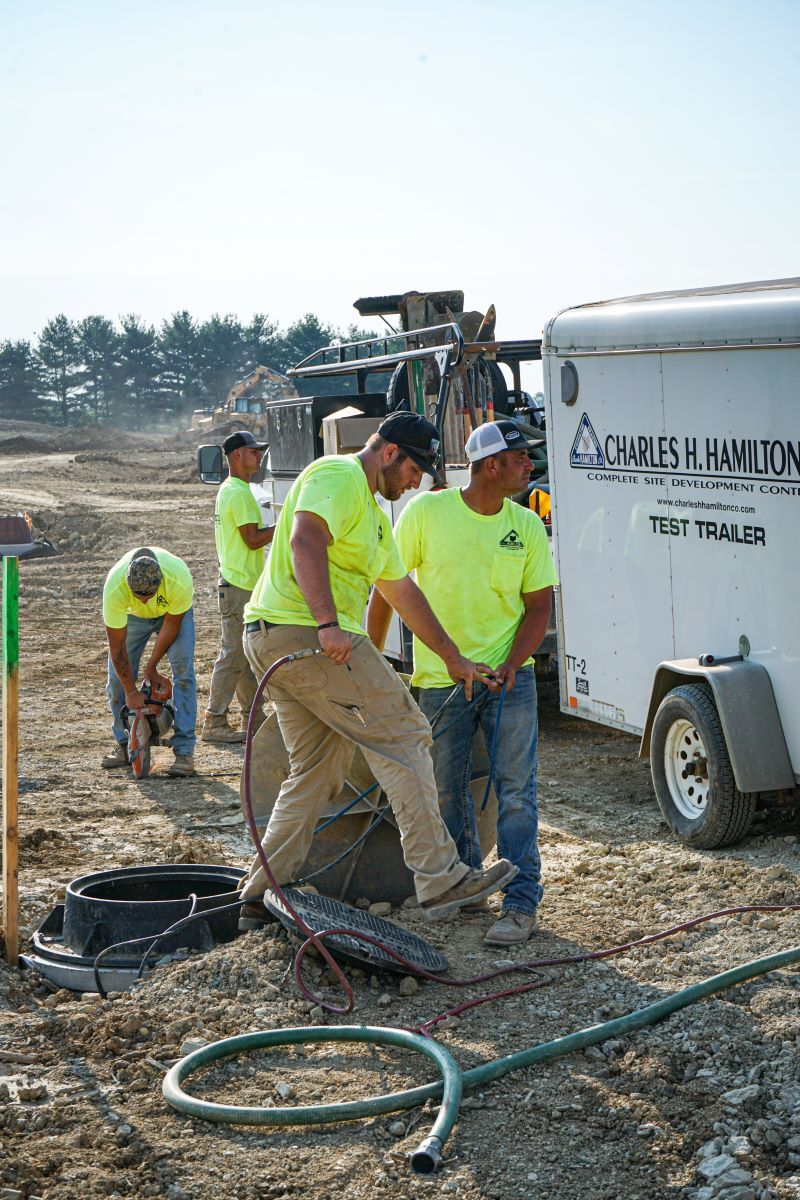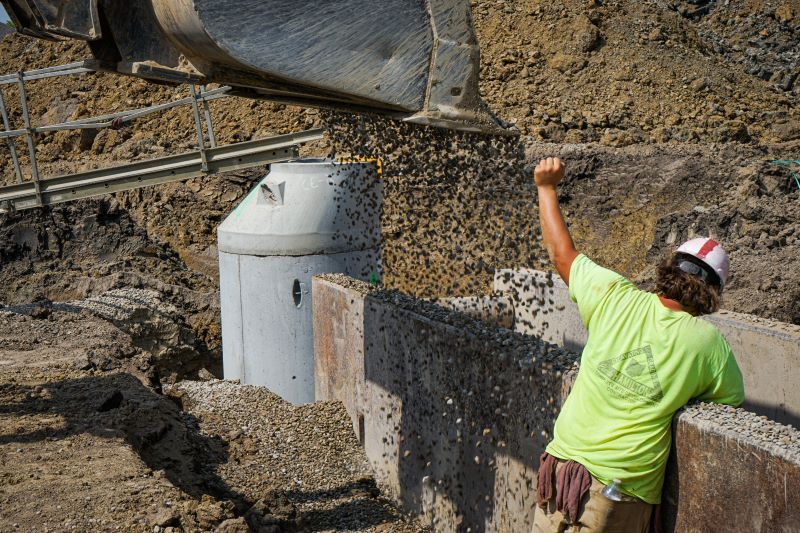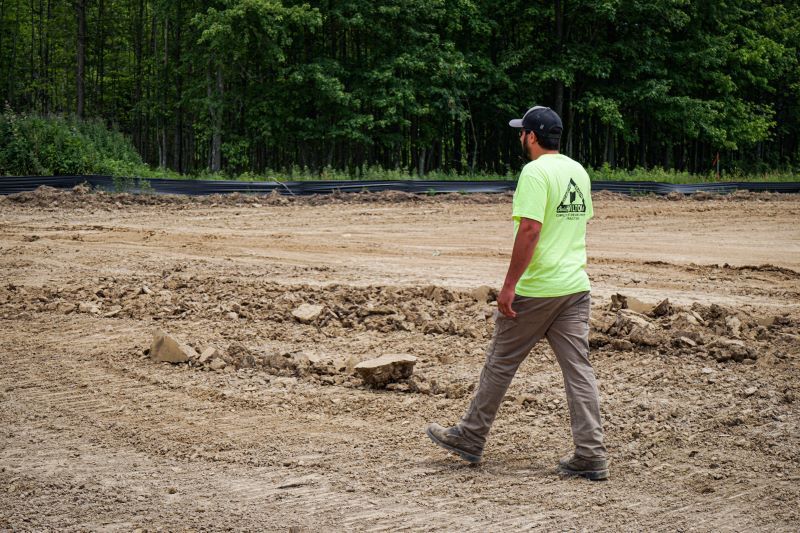Avoid Construction Delays with Subcontractors Who Keep the Project Moving

One crew finishes a task, but the next can’t begin. An inspection gets missed. A delivery shows up too early or too late. Most construction delays don’t start with a major problem. They start with small disconnects that stack up and throw off the entire schedule.
The cause is often the same. Subcontractors focus only on their own task, without considering what comes next. That limited approach disrupts the handoff between trades, and momentum stalls.
Crews who understand the full sequence help the site run more efficiently. At Charles H. Hamilton, we train teams to work with foresight, coordinate clearly, and solve problems before they escalate. This blog breaks down how we keep jobs on track and help general contractors finish strong.

Why It Pays When Crews Think Beyond Their Own Task
A subcontractor might complete their scope exactly as assigned, but if they don’t account for what happens next, they can still slow the project down. A sidewalk pour without utility checks. Grading that blocks access for the next crew. An inspection that no one planned for. Each one causes a chain reaction that eats up time and creates avoidable rework.
On sites that run well, crews think beyond the edges of their trade. They know which teams are coming in after them, when inspections need to happen, and what it takes to keep progress steady. When that kind of awareness becomes the norm, the entire construction timeline holds together more smoothly.
This kind of planning is reinforced through smart construction scheduling strategies that help each trade work with foresight instead of waiting for someone else to raise the flag.
How Charles H. Hamilton Builds Proactive Crews
We train every crew member to look beyond their own task. Our process includes foreman development, peer coaching, and clear jobsite goal tracking. Crews learn how to recognize sequencing needs, ask better questions, and communicate with other trades so the handoff goes smoothly.
This awareness is supported through regular feedback and measurable expectations. Our teams use performance measurement tools to track more than just completion. We track coordination, site-readiness, and timing to help our crews work in sync with the rest of the project.
Coordination, Sequencing, and the Impact on Workflow
Every step of construction site work relies on the step before it. Pouring curbs without checking grade can disrupt final grading. Concrete placed too early can block a paving crew. Even the best work creates problems if the sequence is off.
Our crews work with a clear understanding of construction sequencing. They know when to hold off and when to move quickly. They prepare for inspections, leave access open, and plan their work to support the next phase. That approach keeps the pace steady and makes it easier for general contractors to manage progress using strong project management strategies.
Charles H. Hamilton’s Role in Site-Wide Efficiency
Our teams pay attention to the details that often get missed. We look at how materials move, where utilities tie in, and when inspectors need access. These points affect how efficiently the job moves, and our crews are trained to keep those pieces in mind from the beginning.
That mindset starts in pre-construction. During property development planning, we help identify layout gaps, staging concerns, and timing conflicts. Planning for those details early leads to better outcomes on-site.

Spotting and Flagging Issues Early
The sooner a problem is caught, the less time it costs. Our crews are trained to identify layout concerns, incorrect specs, or access conflicts as soon as they spot them. That feedback goes directly to the superintendent or project lead so the issue can be addressed before it affects progress.
This kind of attention to detail reduces rework and helps general contractors maintain control over the construction timeline without scrambling to catch up.
Built-In Communication That Prevents Rework
Communication gaps are one of the fastest ways to lose time. Our crews are trained to stay in touch with field leads and other trades throughout the day. That includes reporting updates, clarifying specs, and checking with the superintendent when something looks off.
This kind of field-level coordination reduces the risk of errors and helps align every part of the build. We’ve made it part of our process to reinforce job site communication so that everyone gets what they need without waiting for answers.

A Better Handoff Process Leads to a Better Finish
Good projects fall apart at the end when the handoffs don’t hold. Poor cleanup, missed details, and gaps in documentation all lead to punch lists that drag the job past its target date.
We train our teams to finish cleanly. That includes self-checks, organized closeout materials, and a clear handoff that supports the next trade instead of leaving them with problems to fix.
How Charles H. Hamilton Crews Support Clean Closeouts
Final walkthroughs move faster when crews finish with care. We teach our teams to check their own work, document completion clearly, and clean up so the next trade isn’t left with a mess.
Our approach to construction quality stays consistent from day one through the final punch list. The same habits that keep the project on track early help keep it tight at the end.
Bring the Right Crew to the Right Site with Charles H. Hamilton
When you need subcontractors who contribute more than labor, we’re ready. Charles H. Hamilton sends crews who plan ahead, keep the site moving, and support the full project—not just their scope.
Schedule a crew today that brings foresight, coordination, and accountability to every phase of your project.

